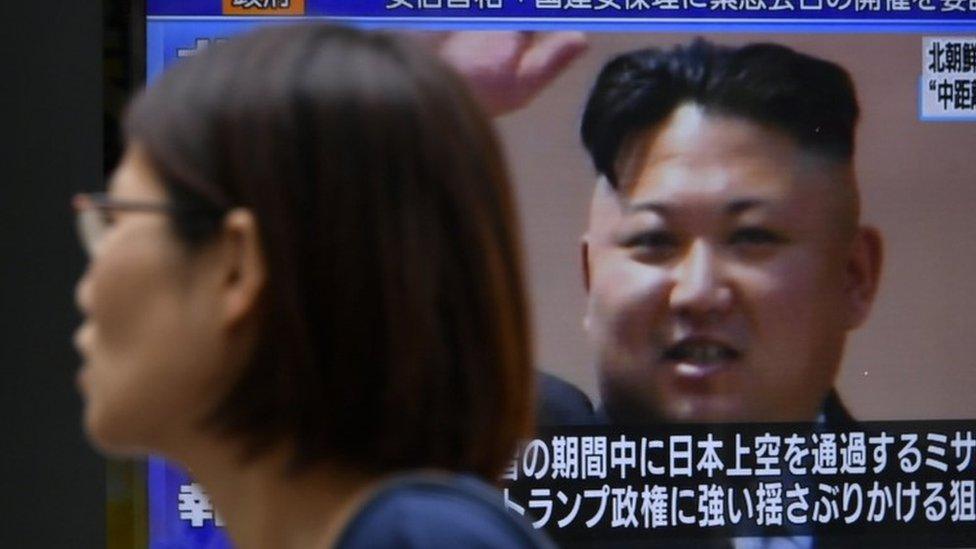North Korea preparing more missile launches, says South
- Published
South Korea carries out live-fire drills in response to the nuclear test
South Korea says it has seen indications that the North is preparing more missile launches, possibly an intercontinental ballistic missile.
It said it was strengthening its controversial US-made Thaad missile defence system after the North's test of a nuclear bomb at the weekend.
The South has carried out live-fire exercises in response to the test.
The United Nations Security Council is holding an emergency meeting to discuss its response.
It last imposed sanctions in August, targeting North Korean exports.
Speaking before the meeting, the British ambassador to the UN, Matthew Rycroft, told reporters there were "further sectors of the economy which could be sanctioned" and more could be done to prevent the North Korean government exploiting North Korean labourers working in other countries.
The US has warned that any threat to itself or its allies will be met with a "massive military response".
The North says it tested a hydrogen bomb that could fit on to a long-range missile. Pyongyang has repeatedly defied UN sanctions and international pressure by developing nuclear weapons and testing missiles, and the provocations have only intensified.
In the past two months it has conducted intercontinental ballistic missile tests, sending one over mainland Japan into the Pacific Ocean. It has also threatened to fire missiles towards the US Pacific territory of Guam.
What signs of further tests is the South seeing?
Chang Kyung-soo, a South Korean defence ministry official, told parliament: "We have continued to see signs of possibly more ballistic missile launches. We also forecast North Korea could fire an intercontinental ballistic missile [ICBM]."
The ICBM could be fired into the North Pacific, officials said.
No timeframe was given but this Saturday, the anniversary of the foundation of the North's regime, or 10 October, the establishment of the ruling Workers' Party of Korea, are possible dates.

Why North Korea is off the intelligence radar
By Frank Gardner, BBC security correspondent
North Korea is an intelligence failure for the West. All predictions as to the speed of that country's progress towards developing a nuclear-tipped ballistic missile capability have proven to be short of the mark.
In both missile technology and nuclear weapons tests, North Korea has astounded defence and intelligence analysts with the pace of its advance towards full ICBM nuclear capability. Why? Because North Korea is an immensely hard intelligence target.
Largely sealed off from the outside world, it is possibly the most difficult country to spy on. Most of its citizens do not have access to the worldwide web, limiting the scope for cyber-penetration. On the military side it has developed a network of mobile missile launchers and underground testing sites that are all but invisible to US satellites.
The country that has possibly the best idea of what North Korea is up to is its vast neighbour, China. But given China's own tensions with the US, it has not seen it in its interests to share what it knows with Washington.

How are the South and its US ally responding?
Monday's drills simulated the targeting of the Punggye-ri nuclear site in Kilju County, where North Korea carried out its bomb test. Missiles were fired from the ground and rockets from fighter jets.
The ministry said there would be more live-fire drills in the South this month, involving Taurus air-to-surface missiles mounted on F-15 jets.
Any US response would be "effective and overwhelming" - James Mattis
The ministry also told parliament the US would seek to deploy a nuclear-powered aircraft carrier to seas off the peninsula.
Four more launchers of the US Thaad (Terminal High-Altitude Area Defence) missile defence system -strongly opposed by China and Russia - would also be deployed to join two already at a site in Seongju, south of Seoul.
South Korea and the US have also agreed "in principle" to revise current guidelines so that the South can double the maximum payload of its ballistic missiles, the Yonhap news agency reports., external
US President Donald Trump has said the US is considering stopping all trade with any country doing business with North Korea, which relies on China for about 90% of its foreign trade.
How did the nuclear test unfold?
On Sunday, seismologists started picking up readings of an earth tremor in the area where North Korea had conducted nuclear tests before.
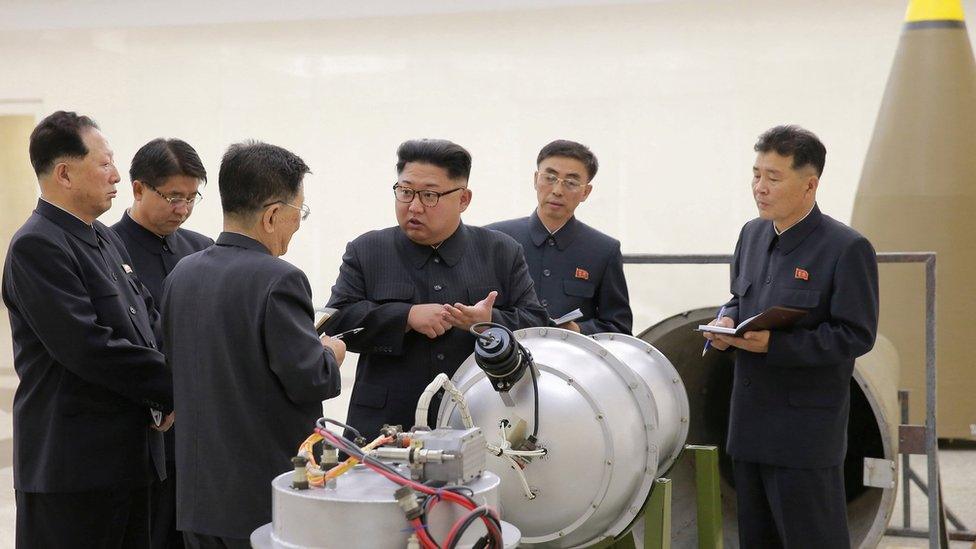
State media showed North Korean leader Kim Jong-un inspecting what it said was a hydrogen bomb
The US Geological Survey put the tremor at 6.3 magnitude. North Korea later confirmed its sixth and most powerful nuclear test.
Pyongyang then released pictures of leader Kim Jong-un with what state media said was a new type of hydrogen bomb.
Estimations of the power of the tested device have varied widely, from 50 kilotons to 120 kilotons. A 50kt device would be about three times the size of the bomb that struck Hiroshima in 1945.
The South's Defence Minister, Song Young-moo, said it was now presumed the North had reduced its nuclear warhead in size to below 500kg (1,100lbs), and would be able to fit one on an ICBM.
However, analysts have said the North's claims about miniaturisation should be treated with considerable caution.
North Korean state media announces "hydrogen bomb" test
Officials in China said they were carrying out emergency radiation testing along the border with North Korea.
Nuclear N Korea: What do we know?
What are Russia and China saying?
Chinese foreign ministry spokesman Geng Shuang said Beijing had used diplomatic channels to convey its opposition to the nuclear test.
But he added: "Using force to resolve the nuclear issue on the Korean Peninsula is not an option."
Russian Deputy Foreign Minister Sergei Ryabkov said sanctions had reached the limit of their impact and serious diplomatic efforts needed to be stepped up.
North Korea is "trying to become a nuclear state", he said. "Of course, this is a worrying prospect. This is an unacceptable development for us."


- Published3 September 2017
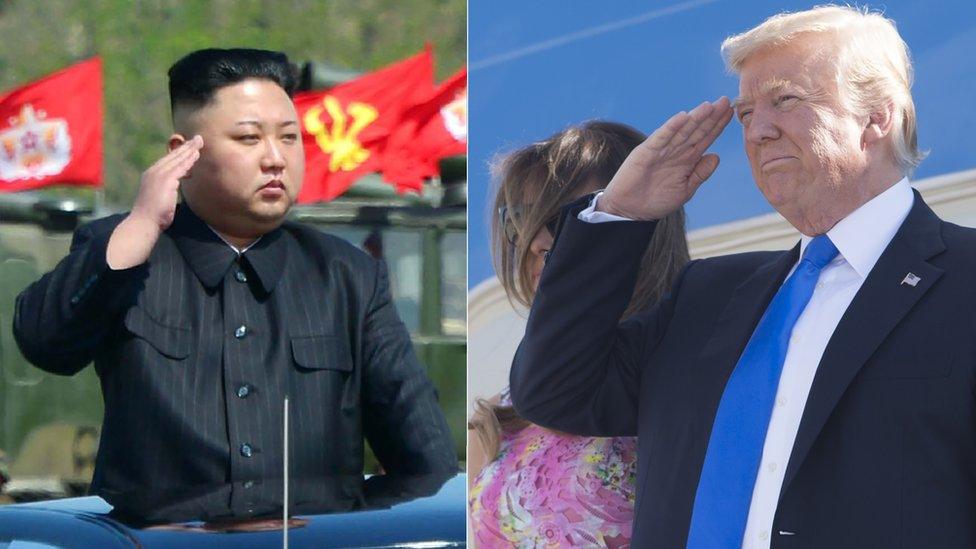
- Published29 August 2017
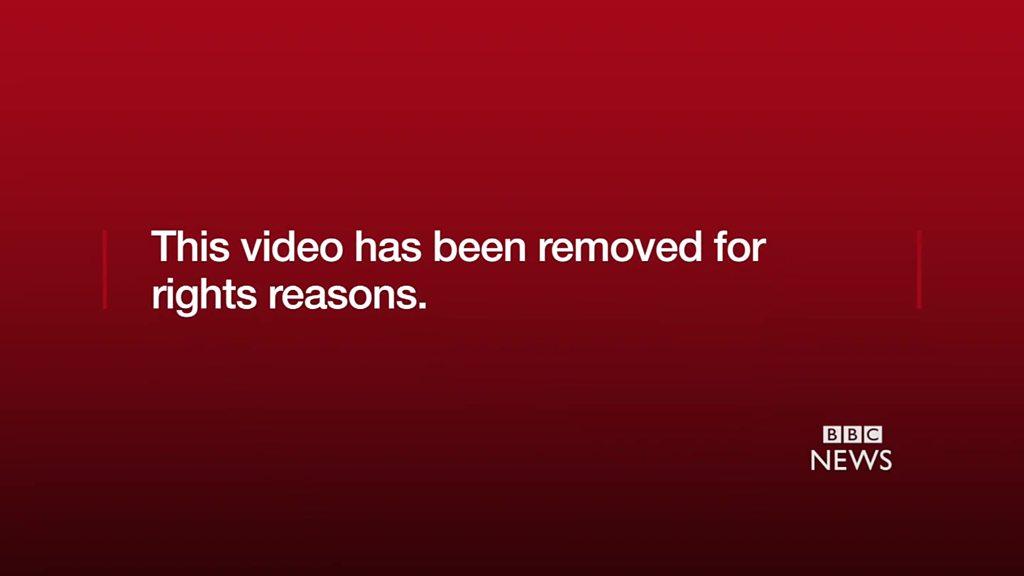
- Published29 August 2017
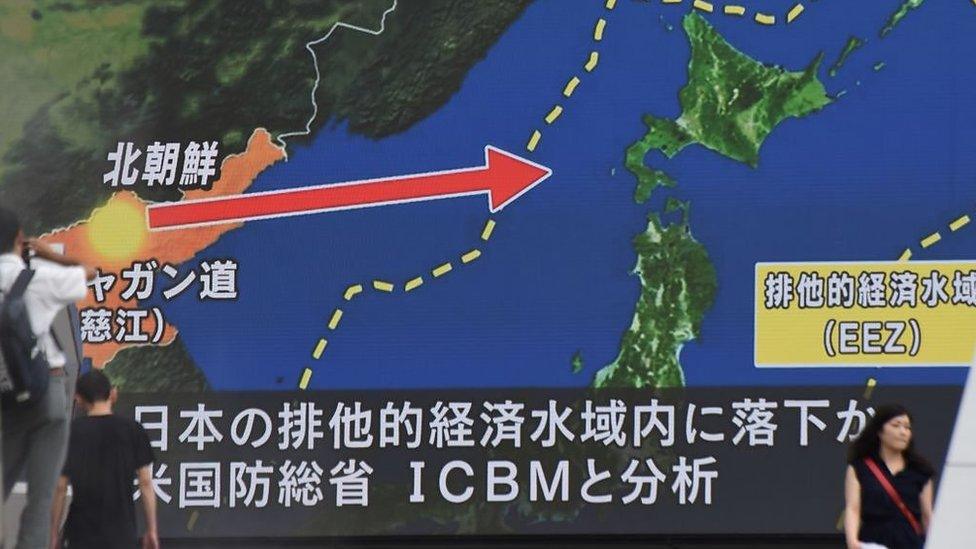
- Published29 August 2017
